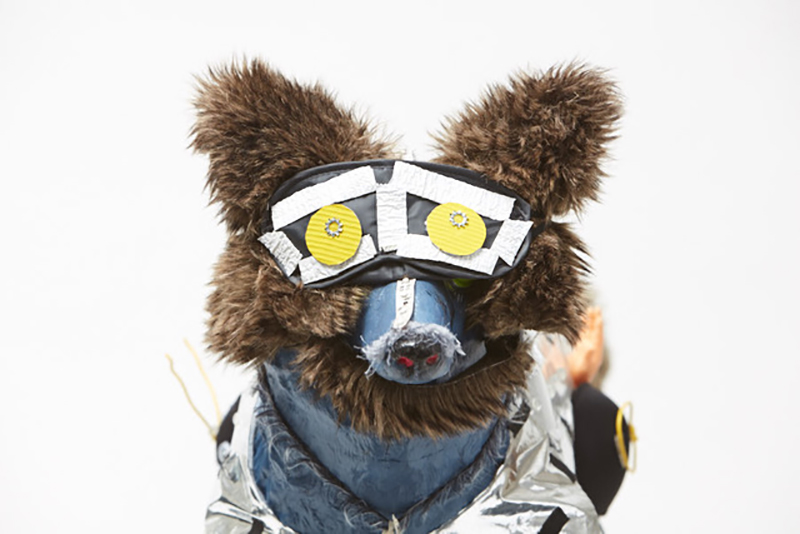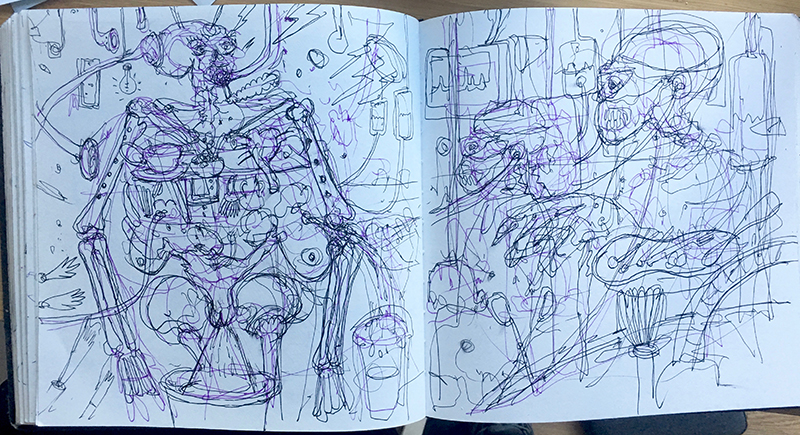The Exhibition
Bushe and Cannizzo want to tell a story about a meeting between modern humans and Neanderthals – an imaginary tale created through drawings and objects. For example, a possible story might have three scenes:
- A day 30,000 years ago – the last day of the last Neanderthal and speculations about what caused her or his death, based on the current scientific literature about the extinction of the Neanderthals including climate and environmental change, the presence or absence of dogs and warm parka-like garments, and human beings armed with superior weapons.
- The present day- this Neanderthal is cloned from ancient DNA and becomes the object of intense and secret scientific evaluation but escapes into the wider world outside of the laboratory and meets modern humans who react in a variety of positive and negative ways to this ‘strange’ person. Interbreeding between a female Neanderthal and a modern male or a male Neanderthal and a modern female produces a child with characteristics of both ancient and modern humans.
- The year 2199 – the future when the world is full of neo- Neanderthals – peopled by the descendants of the the cloned Neanderthal and a modern human in the past. This imagined world can be presented in contrast to a 1950s prediction of what life on earth might be like in the year 2199.
Such a narrative would touch on science fiction – where so often the moral and ethical struggles between dystopias and utopias are played out – and the creation of fantastic worlds. In doing so, it would become clear these are indeed ancient human patterns with a myriad of possible outcomes.



